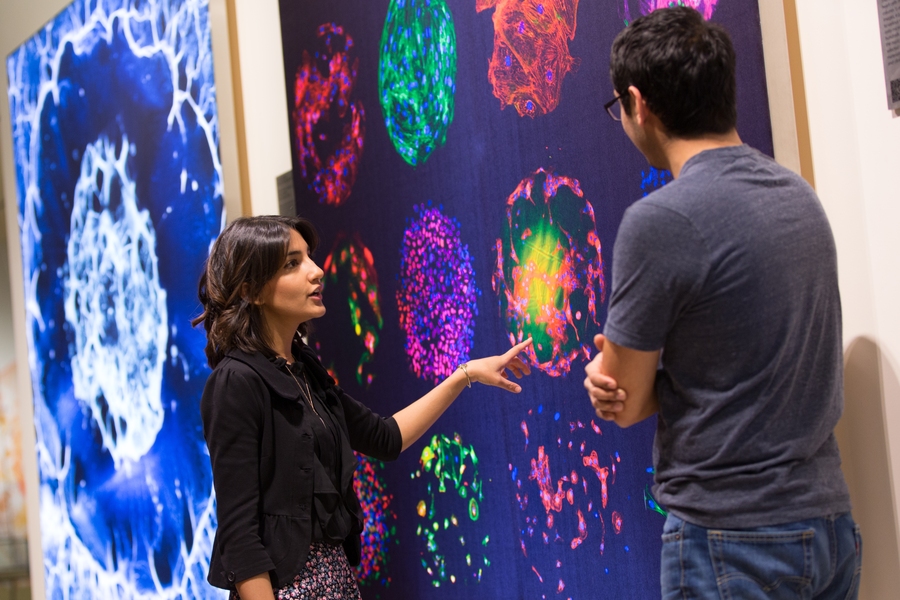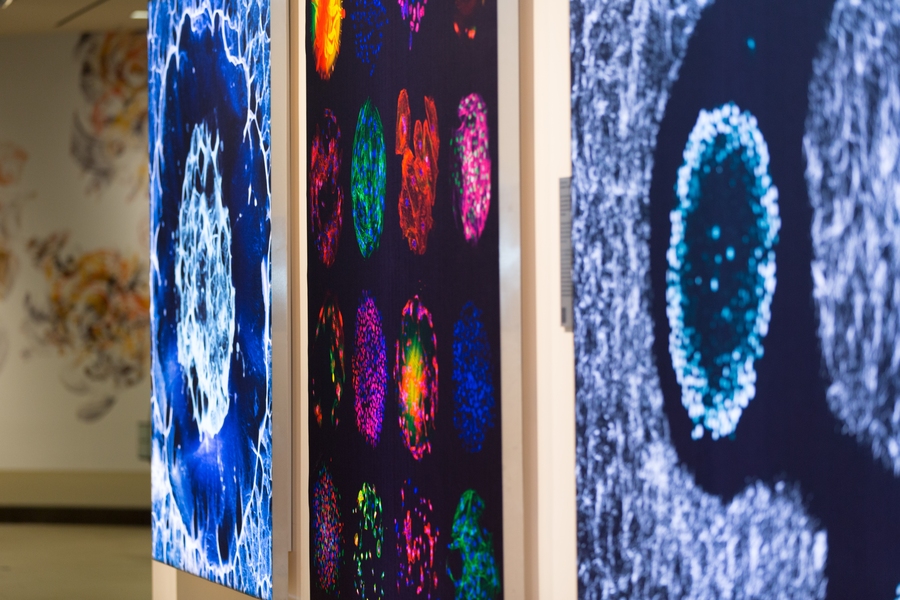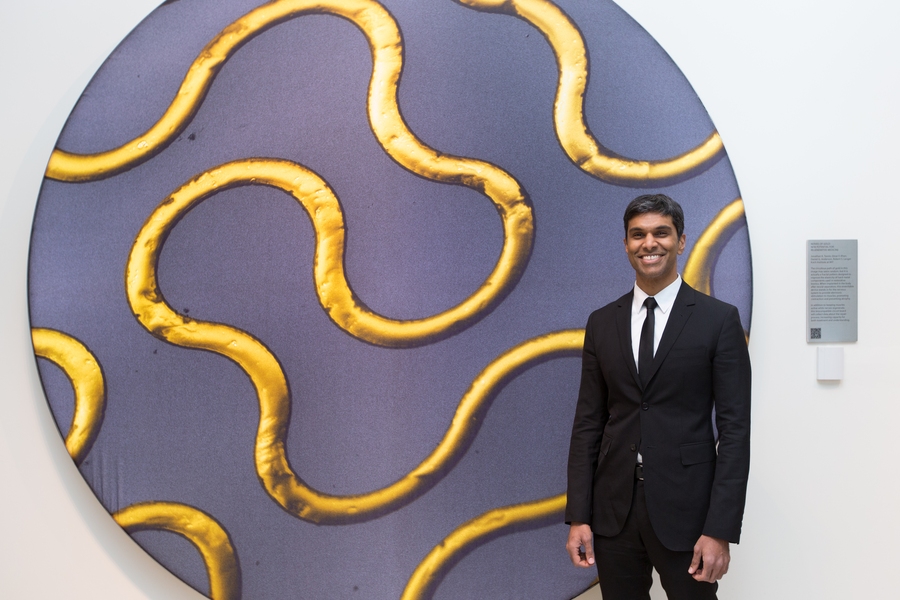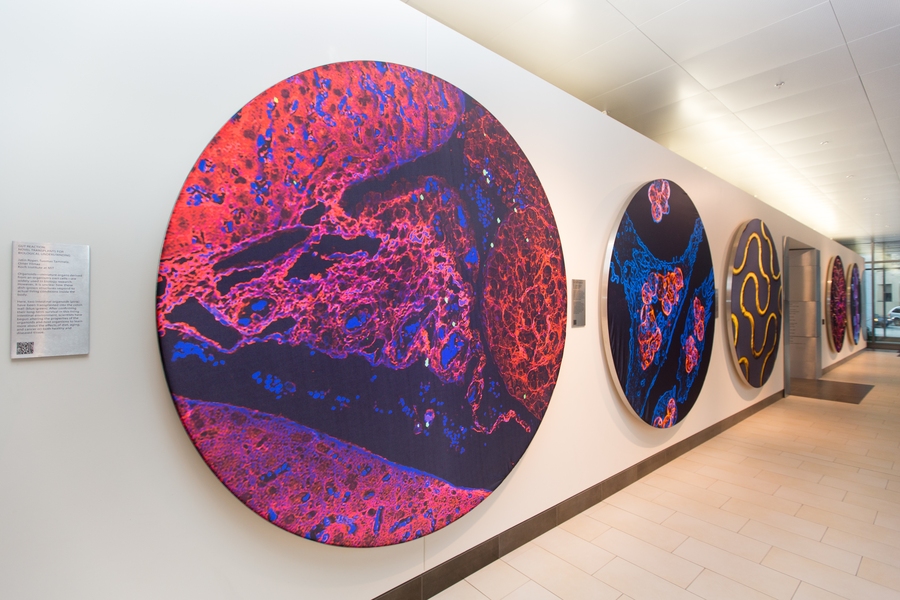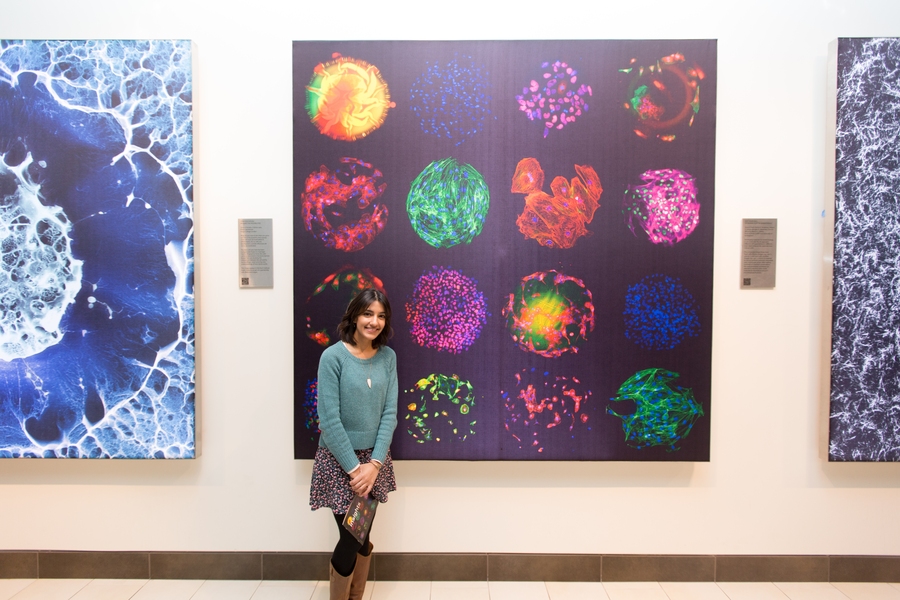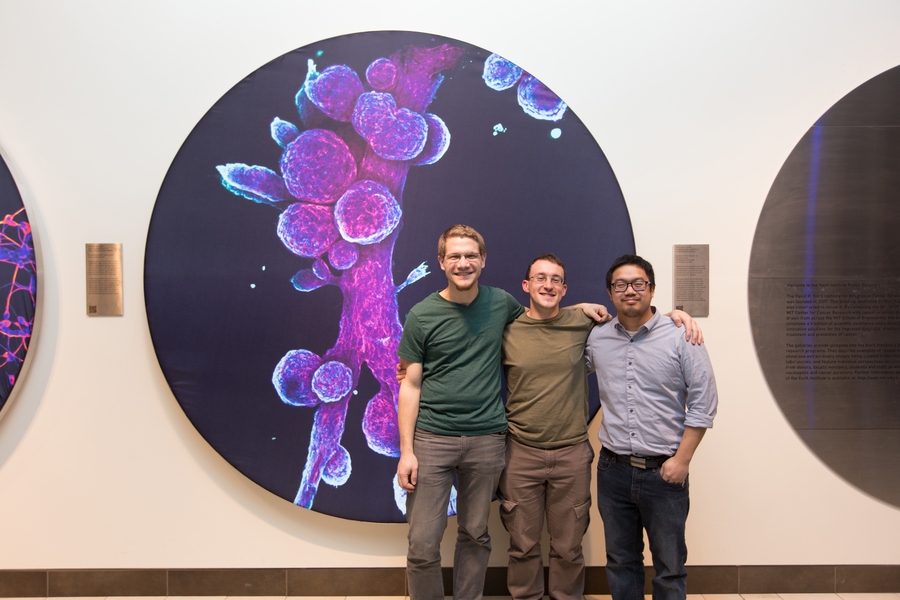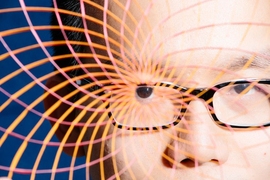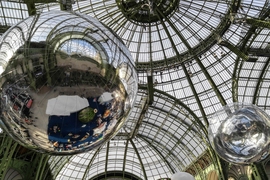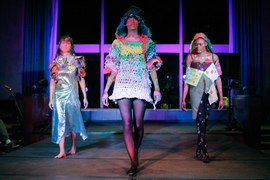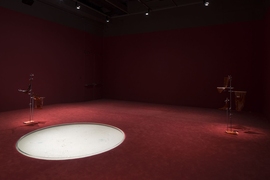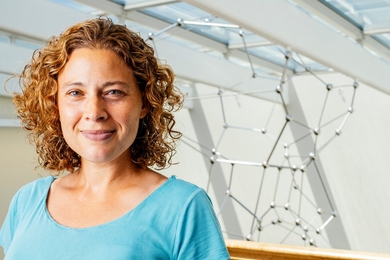Through large windows on the corner of Vassar and Main streets hangs a series of oversized portraits and landscapes, plainly visible to those on the outside. The display features a breathtaking array of colors and shapes configured in otherworldly patterns — but this is no ordinary art collection.
Each of the striking scientific images adorning the walls of the Koch Institute for Integrative Cancer Research’s public galleries tells a story of hope and progress, capturing a snapshot of potentially groundbreaking research. Together, they comprise the 2016 Image Awards exhibition, a showcase of winning images from the Koch Institute’s annual competition to recognize the best and brightest of biomedical imagery from MIT laboratories.
The art of science
From immune cells devouring cancer to layered nanoparticles speckled across an early-stage tumor, these images are windows into a microscopic world rarely seen outside of the lab.
“Every year anew these images offer glimpses into the wondrous world of research and really get at what drives [Koch Institute] researchers which is the promise of scientific and technological advances converging to overcome disease,” says Anne Deconinck, executive director of the Koch Institute, to an auditorium packed with guests from MIT and the general public. The crowd was assembled to witness the unveiling of the new collection and to listen to the researchers who captured these images share the stories behind the displays.
“The images really speak for themselves in showcasing how amazing the work here is at the Koch Institute,” Deconinck adds.
This year’s nine winners were selected from more than 150 candidates by a panel of judges whose expertise spans a wide range of disciplines, including biology, visual arts, and media production. The submissions come from the life sciences all across MIT, and the winners are chosen based both on their visual merit and for the research they depict.
“The criteria that we give to judges is that we want them to pick images that are visually stunning and scientifically compelling,” explains Erika Reinfeld, the Koch Institute’s public outreach coordinator. “Once chosen, I work with the winners to craft captions for the display that explain both aspects of their images. The opening event is very much an extension of that process — a chance for the creators to share, in their own words, what these images mean to them.”
“I love how the gallery engages the public,” says Bethany Millard, chair of the MIT Corporation Partners Program and founder of Phosphorous Productions, a company dedicated to creating science podcasts that educate and inspire, and one of the 2016 Image Awards judges. “The images are arresting, fascinating, and ultimately works of art. To experience them is to feel a profound sense of wonder and gratitude for the work of the Koch Institute.”
Unveiling the artwork
The debut of the new collection took place on March 3, the eve of the Koch Institute building’s five-year anniversary.
One-by-one, presenters gave brief overviews of the research underpinning their images. Many of the pieces represent recent breakthroughs and ultimately the possibility for better outcomes for patients.
Dexter Jin of the Whitehead Institute’s Gupta Laboratory presented "Duct Duct Goose," a purple-and-cyan image showing the architecture of healthy human mammary tissue grown on three dimensional hydrogel scaffolds. The model, described in a recently published paper, provides researchers with the opportunity to study normal mammary development and cancer formation.
“I love how all the amazing data that come from such a groundbreaking method can be summarized in such a visually stunning way,” Jin says.
“Having an image displayed is meaningful because it brings you closer to the people you may one day help heal,” says Omar F. Khan of the Koch Institute’s Anderson and Langer Laboratories. “In a way, it’s a conversation with the viewer and the scientist’s way of reinforcing to the public that we haven’t forgotten our pledge to make a difference.”
Khan is a member of the group that created the image "Nerves of Gold" — a fractal pattern of golden strands that comes from a close-up of an advanced piece used in restorative bionics. Its design represents a major step forward in improving the elasticity of hard-metal components. The device can be implanted in the body following neural separation to stand in for the nervous system and prevent atrophy by electrically stimulating muscles as the nerves repair.
“I think the efforts made by the Koch [Institute] to make our work accessible to the public is incredibly rewarding for [researchers],” says Asha Patel of both the Anderson and Langer Laboratories, whose image, "Suit Your Cell," shows how different cell types respond to a wide variety of polymers during an automated screening experiment.
“The gallery brings ideas as well as people together through art who otherwise may never have reason to meet,” adds Patel.
Every year, along with the images from MIT, the public galleries also feature a piece from Wellcome Images, a London-based world leader in the collection of biomedical images. This year’s selection, "Stem Education," features a stem cell cryogenically frozen in a hydrogel matrix and was chosen by the judges from this year’s 20 Wellcome Image Award winners.
“It has been a great honor to be part of the Koch Institute’s Image Awards since the beginning five years ago,” says Catherine Draycott, head of Wellcome Images and Image Award judge. “To see [the] images created through the ground-breaking research of the [Koch] Institute and of MIT provides a thrilling window into the potential of the future of medicine.”
Many of the image creators credited the unique community found at MIT and the Koch Institute with providing the ideal venue for a meeting of art, science, and engineering.
“MIT is a place of progressive, creative, and free thinkers who love to share ideas and stories,” says Khan. “When this exuberance is coupled with a genuine desire to help the world, wonderful things can begin to happen.”
The new images will be on display in the Public Galleries until next spring. To learn more about the Koch Institute Public Galleries, including hours and to see past years’ winners, visit ki-galleries.mit.edu.
